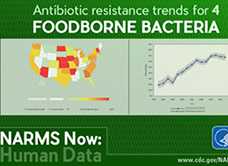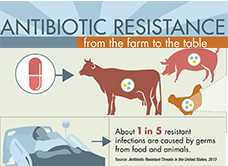Enteric Diseases Epidemiology Branch
CDC’s lead epidemiology and surveillance group for tracking pathogens and identifying sources for bacterial enteric (intestinal) infections transmitted by food and other routes.
Activities
- Monitoring human illness caused by bacteria, and measuring the incidence
- Estimating the number of foodborne illnesses, hospitalizations, and deaths
- Attributing illness to transmission routes and to specific foods and settings
- Targeting prevention measures to meet food safety goals
- Providing data and analyses that inform food safety action and policy
Enteric bacteria typically enter the body through the mouth. They are acquired through contaminated food and water, by contact with animals or their environments, by contact with the feces of an infected person. Every year, millions of cases of foodborne illness and thousands of associated deaths occur in the United States, and the illness burden is even higher in developing countries. Much of this burden could be prevented with better science and prevention tools. We are working to meet national goals to decrease the burden of bacterial diarrheal illness by the year 2020.
We accomplish our work through surveillance, investigation, and research to identify causes, sources, and prevention measures for bacterial infections. Our central values are scientific rigor, rapid response to emergencies, service to regulatory agencies and state health departments, and close collaboration with laboratory colleagues.
Highlights
Pathogens and Diseases
Programs
- Page last reviewed: May 2, 2016
- Page last updated: December 13, 2016
- Content source:


 ShareCompartir
ShareCompartir







